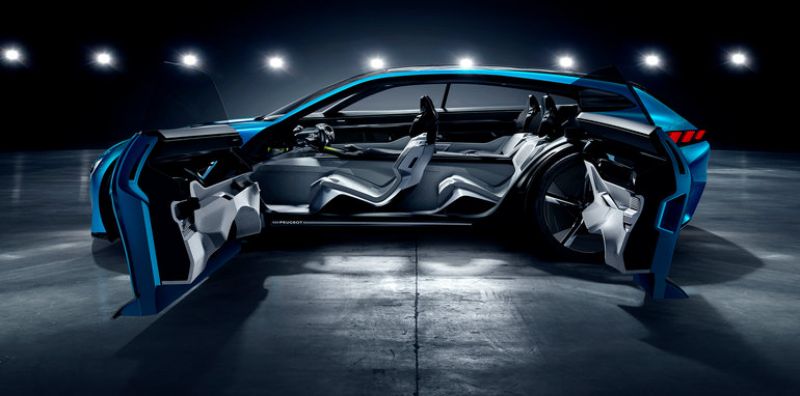 EMERGING TECH
EMERGING TECH
 EMERGING TECH
EMERGING TECH
 EMERGING TECH
EMERGING TECH
Mobile World Congress is in full swing and we have seen the unveiling of a variety of new smartphones, the latest 2-in-1 tablets, laptops, virtual reality and more.
MWC doesn’t focus on only mobile devices, however. It’s becoming a popular event for car manufacturers to unveil their latest creations, especially in the autonomous car market. Here’s a look at the various autonomous and electric cars and technologies that have been announced at MWC this week:
Peugeot SA has unveiled its Instinct concept car, which has the ability to adjust its self-driving modes based on how the driver is feeling.
The Peugeot Instinct has four different driving modes: drive boost, drive relax, autonomous soft and autonomous sharp. Using its onboard Internet of Things platform, Samsung’s Artik Cloud service, the car is able to gather data from the driver’s various connected devices and adjust settings including driving mode, seat and interface settings, ambient lighting and audio.
For example, the Peugeot Instinct will be able to read a driver’s smartwatch data, adjust to the autonomous soft mode and provide a relaxing ride home after a trip to the gym.
![]()
Peugeot’s Responsive i-Cockpit will change the interior layout of the car based on whether it is in “drive” or “autonomous mode. To maximize space in autonomous mode, the steering wheel and toggle switch panel fold into the dashboard while the accelerator pedal folds into the pedal unit.
Whether in drive or autonomous mode, the driver can control the vehicle using the i-Device in the center console. Drivers will be able to use the i-Device to switch between modes and take necessary actions like overtaking another car.
The four-seater Peugeot Instinct is powered by a 297bhp plug-in hybrid system.
Ford Motor Co. unveiled its self-driving drone delivery van, at MWC.
The “Autolivery” concept looks to solve the challenge of the “last 15 meters” in deliveries or “from kerb to door.” The concept would use an electric self-driving van and drones to transport and deliver packages in urban areas. The drones would take over the last 15 meters of the delivery and deliver packages to high-rise apartments or congested urban areas where parking is limited.
![]()
Visitors to MWC can experience the “Autolivery” concept through VR headsets.
Ford has set its sights set on manufacturing a fully autonomous car, with no steering wheel, gas or brake pedals by 2021. The company is already exploring ride-sharing with its acquisition of Chariot last year and bike-sharing with its Ford GoBike service.
Last month, Ford announced it would invest $1 billion over the next five years in artificial intelligence startup Argo AI, founded by veterans of self-driving car projects at Google Inc. and Uber Technologies Inc.
Qualcomm Technologies Inc., a subsidiary of Qualcomm Inc., and navigation company TomTom NV has partnered to create high-definition maps for autonomous cars.
The collaboration will use Qualcomm’s Drive Data Platform, which is able to collect and analyze data from different vehicle sensors to monitor surroundings, determine their location, monitor and learn driving patterns and share this information with smart cars and infrastructure.
This technology will be paired with TomTom’s HD Map tool, which assists autonomous cars accurately locate themselves on the road at any speed.
To gather data, Qualcomm and TomTom plan to use machine learning and crowdsourcing, rather than traditional map development using vehicle fleets to collect location, raw imagery and Lidar data.
![]()
British company, Roborace Ltd. unveiled its self-driving race car – Robocar – at MWC this week.
Equipped with four 300 kW motors, Roborace claims its car will be able to reach speeds of just under 200 miles per hour or 320 kilometers per hour. Robocar is powered by Nvidia Drive PX2, which will process information from a variety of sensors, including five LIDAR, two radar, 18 ultrasonic, two optical speed sensors and six cameras.
Spanish carmaker, Seat, S.A. has unveiled its eMii all-electric vehicle that, according to the company, will have zero emissions.
The eMii has an 81 bhp electric motor with 210Nm worth of torque and a top speed of 80mph. The 18.7kWh lithium-ion battery has a claimed range of 100 miles and can be fully charged using a conventional household socket in nine hours. Alternatively, for a quicker result, a CCS 40kW system can charge the battery to 80 percent in 30 minutes.
THANK YOU